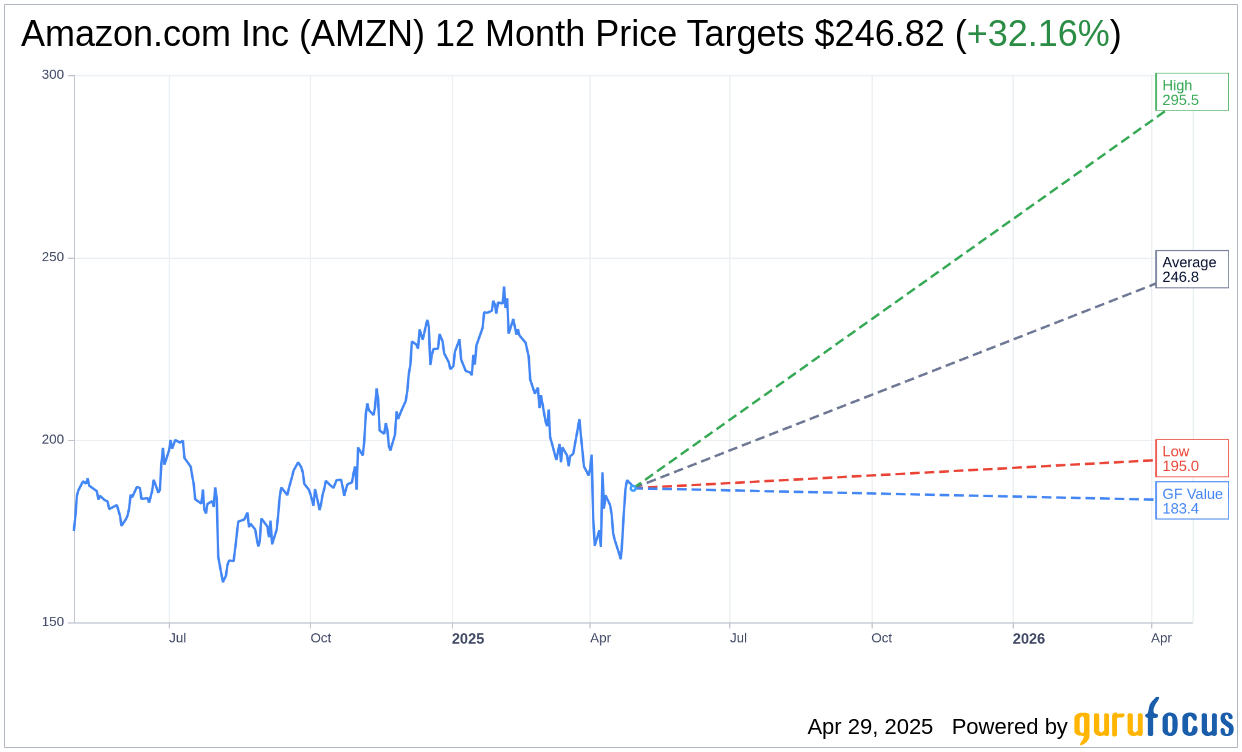Key Takeaways:
- Amazon faces significant economic pressure from tariffs impacting retail margins.
- Analysts project a potential 32.16% increase in Amazon's share price over the next year.
- Despite challenges, Amazon's average brokerage recommendation remains "Outperform."
Amazon Confronts Economic Challenges
Amazon.com Inc (NASDAQ:AMZN) is currently navigating the rough waters of economic hurdles, particularly the impact of tariffs. This financial strain poses a threat to its retail margins and market share. Evercore ISI's Mark Mahaney points out the crucial decision Amazon faces: whether to absorb these escalating costs or risk a decline in market dominance, potentially offsetting the recent margin improvements.
Wall Street's Insights and Forecasts

Wall Street analysts are optimistic about Amazon's potential growth. According to projections from 67 analysts, the average target price for Amazon.com Inc (AMZN, Financial) is $246.82. This target price is supplemented by a high forecast of $295.46 and a low of $195.00. Based on these estimates, investors could see an upside of 32.16% from the current stock price of $186.76. For more comprehensive forecast data, you can visit the Amazon.com Inc (AMZN) Forecast page.
Brokerage Recommendations and GF Value
With a consensus recommendation from 73 brokerage firms, Amazon's (AMZN, Financial) average brokerage recommendation sits at 1.8, indicating an "Outperform" status. On the rating scale from 1 to 5, where 1 represents a Strong Buy and 5 indicates Sell, this suggests a favorable outlook for the stock.
However, the GuruFocus estimates paint a slightly different picture. They suggest an estimated GF Value for Amazon.com Inc (AMZN, Financial) of $183.43 in the next year, which implies a marginal downside of 1.78% from its current trading price of $186.76. The GF Value is a representation of what the stock's fair market value should be, based on historical trading multiples, past business growth, and future performance projections. For a deeper dive into the numbers, visit the Amazon.com Inc (AMZN) Summary page.
